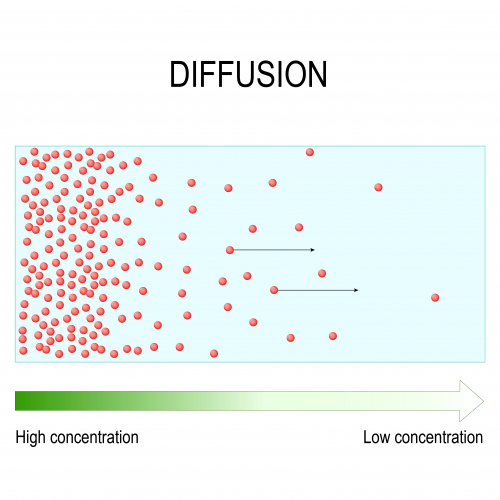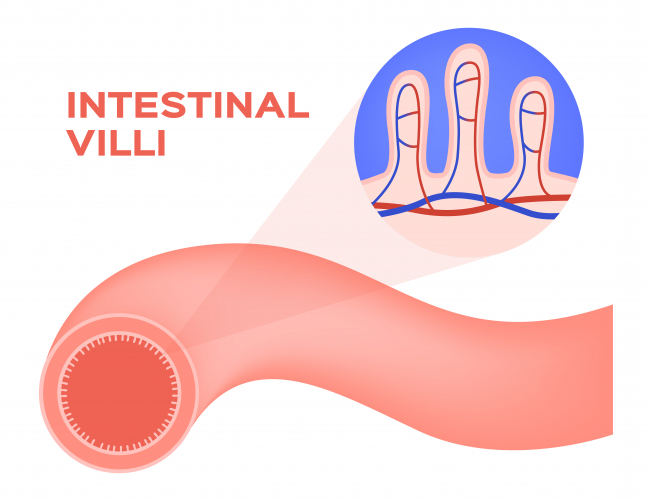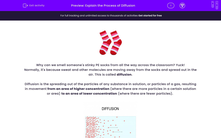.jpg)
Why can we smell someone's stinky PE socks from all the way across the classroom? Yuck!
Normally, it's because sweat and other molecules are moving away from the socks and spread out in the air. This is called diffusion.
Diffusion is the spreading out of the particles of any substance in solution, or particles of a gas, resulting in movement from an area of higher concentration (where there are more particles in a certain solution or area) to an area of lower concentration (where there are fewer particles).

Living organisms need different substances to be able to survive and function. These substances need to be transported into and out of their cells through diffusion (as well as osmosis and active transport - you will learn more about these later!). During diffusion, molecules move from an area of high concentration to an area of low concentration. They are said to move down a concentration gradient. Particles diffuse until they are evenly spaced apart. Diffusion is a passive process, which means that no energy is needed and it happens naturally.

Diffusion in organisms
The cell membrane has an important job to do. It is selective. This means it won't just let any random particle through - it can monitor which particle is allowed through it and also how many particles. Pretty clever, right?!
In unicellular organisms like the amoeba (organisms made up of only one cell), diffusion is how the organism gets its food, oxygen and how it gets rid of waste products. As it's only made up of one cell, the particles of food or water, for example, don't have far to travel, so diffusion is the simplest way to enter the cell. They don't need complex transport systems.
In multicellular organisms, surfaces and organ systems are specialised for exchanging materials. This is to allow sufficient molecules to be transported into and out of cells for the organism’s needs. Diffusion is the main way that substances move over short distances in organisms.
Breathing involves exchanging gases in the lungs - this requires diffusion. When you breathe in, oxygen in the inhaled air diffuses through the tiny alveoli (air sacs) in your lungs into your bloodstream. The oxygen is transported around your body. Carbon dioxide is the waste gas produced by respiration. Carbon dioxide diffuses from cells into the bloodstream and is exhaled by the lungs.
The alveoli have a few adaptations that make gas exchange very efficient. For example, they are only one cell thick, making them very thin! This allows gases to pass through easily and quickly!

Another example of diffusion is in the small intestine. Digested food is broken down into small molecules such as glucose and it's transported around the body in the blood. The small intestine is lined with many finger-like projections called villi. The glucose molecules diffuse through the villi of the small intestine into the blood to be transported around the body. The villi are adapted by being very thin and having finger-like projections that increase the surface area.
.jpg)
Diffusion also occurs in plants. Plants take in carbon dioxide for photosynthesis and produce oxygen. These enter and leave the plant through diffusion. The leaf is adapted for gas exchange. There are tiny pores, called stomata, in the surface of the leaf which allow carbon dioxide to enter the leaf for photosynthesis. Molecules of carbon dioxide diffuse from a region of higher concentration (the atmosphere) to a lower concentrated area (leaf). The stomata also allow oxygen to diffuse out.
In this activity, we will explain the process of diffusion.







